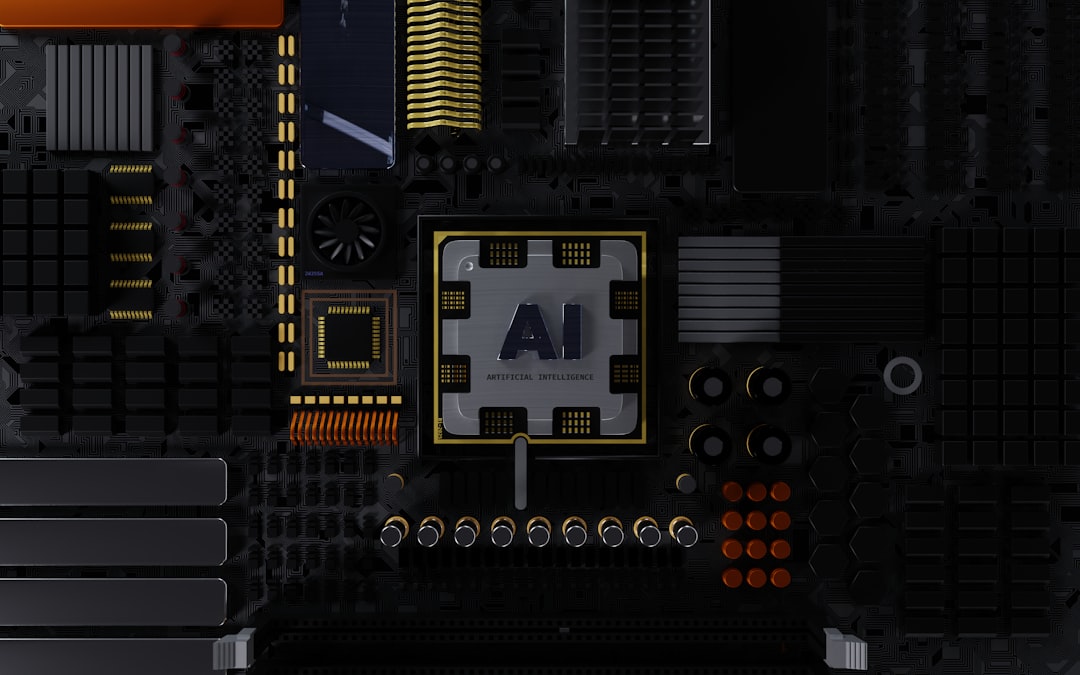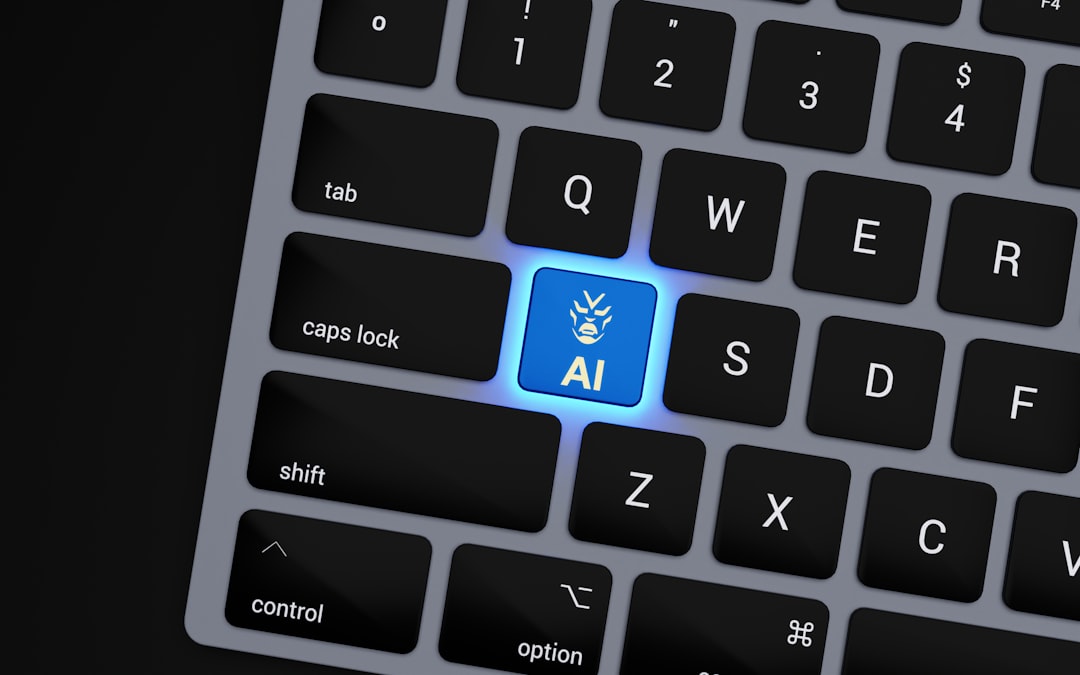The Rise of AI-Powered Performance Management in HR Software A 2024 Analysis
The Rise of AI-Powered Performance Management in HR Software A 2024 Analysis - AI adoption rates surge among HR leaders
The use of AI by HR leaders has grown rapidly, reaching 72% earlier this year. This is a substantial increase from the roughly 50% adoption rate seen over the past six years. The trend shows no signs of slowing down, with a large majority of HR leaders – 92% – planning to expand their use of AI across different HR areas. A key part of this expansion is the rising interest in generative AI. By early 2024, 38% of HR leaders were either testing or using these types of AI systems, nearly double the percentage from just a few months prior. This increase in adoption of AI, particularly generative AI, reflects a change in perspective. It seems many people are beginning to see AI not as a replacement for human workers, but as a way to enhance human capabilities in HR. As workplaces continue to change, the potential for AI to improve HR processes, make them more efficient, and easier to use is becoming increasingly attractive.
The landscape of human resources is undergoing a rapid transformation, with AI adoption rates among HR leaders skyrocketing in recent months. Early 2024 saw a jump to 72% of HR leaders utilizing AI, a substantial increase from the roughly 50% adoption rate observed over the previous six years. This isn't just a fleeting trend, as a majority of HR leaders are signaling their intent to expand AI's role across various HR areas. Specifically, nearly all (92%) of them are planning to increase AI usage somewhere within their HR operations.
This trend extends to generative AI, a field that has gained significant attention within the last year. About 38% of HR leaders are either using, testing, or preparing to adopt generative AI in some capacity – a dramatic rise from just 19% six months prior. HR leaders are prioritizing applications of AI that directly address immediate needs and problems, with HR service delivery, chatbots, and performance management taking the lead. We see AI finding its way into diverse HR tasks, from talent acquisition to employee retention and broader workforce planning.
There's a prevalent misconception that AI will lead to widespread job losses in HR, but current implementations show AI tools are more about augmenting human capabilities rather than replacing them. The widespread, nearly universal desire for easy-to-use AI tools is telling. Nearly 90% of employees prefer user-friendly AI technologies that don't require specialized data science knowledge. The push toward user-friendly AI isn't surprising given the recent wave of digital innovation spurred by the COVID-19 pandemic. AI and analytics have become central to businesses' operational strategies, serving as a catalyst for productivity and improved service delivery.
This trend of AI implementation is certainly not confined to any one geographic region. It's a global phenomenon, with HR leaders worldwide investigating and integrating AI into their operational models. While the momentum is clearly towards broader adoption, there's a clear need to address the knowledge gap that currently exists. Concerns about understanding and interpreting AI-generated data are valid, with a significant portion of HR professionals acknowledging this as a major hurdle. This will likely require a sustained focus on workforce education and training going forward.
The Rise of AI-Powered Performance Management in HR Software A 2024 Analysis - Integration of AI across multiple HR functions
AI's influence is spreading across various HR functions, altering how organizations manage their workforce. It's now commonplace to see AI assisting in tasks ranging from finding and onboarding new employees to managing performance and boosting engagement. The goal is to streamline HR processes, making them quicker and easier. The trend leans towards using AI's ability to analyze data and predict outcomes, leading to more informed decisions and a reduction in bias. HR is moving towards becoming more data-driven in its operations.
However, despite the promise of AI in HR, there's a growing need for HR personnel to learn how to use and understand AI outputs. It's not enough just to implement these tools. HR teams must grasp the details of how these systems generate their results to ensure the results align with the organization's goals and ethical standards. Simply put, integrating AI effectively requires HR to move beyond just automating old processes to using these tools to better understand and support their employees. The shift toward AI in HR isn't about robots taking over, but about making HR more effective by leveraging the power of AI to amplify human capabilities and ultimately improve the employee experience.
AI's influence is spreading across the entire employee lifecycle within HR, touching areas like daily operations, hiring, training, and talent management. It's no longer a niche technology; a recent survey shows a strong majority of HR leaders – 92% – plan to increase their use of AI within at least one HR domain soon. This widespread integration covers the whole range of HR activities, from initial candidate screening to onboarding, performance reviews, employee engagement, and even long-term workforce planning.
The hope is that AI will improve decision-making, potentially reduce biases that can creep into human choices, and ultimately enhance the experience for both job candidates and employees. There's a growing belief that predictive analytics will become even more central to HR. It can help HR professionals anticipate patterns and make adjustments before problems emerge. We are also likely to see generative AI making significant changes to HR processes, from finding new employees to managing employee performance.
The goal behind integrating AI into HR is to improve the employee experience while making HR operations more efficient. AI is essentially transforming HR with automated tasks and data-driven insights. This change is helping to make HR more effective and more focused on supporting employee needs.
Organizations that leverage AI effectively have a chance to achieve better results in HR by using data and machine learning to streamline workflows. But, with AI's increased use in HR, there's a need for leaders to understand how it's changing things and successfully incorporate these technologies into their routines. It's an ongoing revolution in HR, one that's demanding a new understanding of how these powerful new tools can be used most effectively. There are, of course, still challenges, such as ensuring AI systems are developed and used in a way that complies with laws and regulations. There's also the need to ensure that employees feel their concerns are heard as AI continues to change their work experience.
The Rise of AI-Powered Performance Management in HR Software A 2024 Analysis - Implementing safeguards for generative AI in performance reviews
The growing use of generative AI in performance reviews necessitates the implementation of safeguards to ensure its responsible application. HR departments are working to establish clear guidelines and processes, carefully selecting suitable AI systems, and providing employees with the training they need to understand how these technologies work. The ultimate goal is to gain the benefits AI offers, like faster and more frequent feedback, which in turn can improve employee development and engagement. However, there are legitimate concerns about potential biases in AI-generated insights, incomplete data sets used to train models, and even the reliability of the feedback. It's vital that organizations develop comprehensive risk management plans that emphasize a continued role for human judgment and scrutiny. A key part of this approach is ensuring that performance reviews don't become fully automated. By integrating thoughtful human oversight into the AI performance process, HR can help avoid potential issues and foster a workplace culture where employees trust that these systems are being used ethically and responsibly. This shift to generative AI within performance reviews needs a balanced strategy that maximizes the benefits while recognizing the potential for problems. Ultimately, this balance leads to a more adaptable and effective workforce.
Human resources teams are increasingly looking to generative AI to manage performance reviews, aiming to get the most out of it while also addressing the potential downsides. Setting clear boundaries, selecting the right AI systems, and training employees are crucial for successfully integrating these new tools into the performance review process.
The growing use of generative AI in workplaces raises ethical concerns, making it necessary to develop careful ways to address those challenges. Generative AI has the possibility to change how we think about performance management by offering real-time feedback, which may lead to improvements in both employee development and engagement.
Traditional performance reviews sometimes have a drawback: feedback can be delayed, which can slow down employee growth. AI-based approaches can help give faster, more focused feedback.
Companies can use generative AI to help drive change across various areas including new product development, productivity, and overall growth. However, some things are standing in the way of wider adoption of generative AI in workplaces. These include regulatory issues, a lack of supporting technology, a shortage of skilled workers, and concerns about who is responsible when things go wrong.
A key part of properly using generative AI is building a system that makes sure it's used in a way that is both ethical and responsible. This system should emphasize the importance of humans overseeing and verifying the results of AI tools.
The use of large language models, like ChatGPT, in HR is leading to important management questions about how to effectively use these tools.
The merging of AI and human resources is seen as a huge turning point. There's a chance that it will lead to a workforce that is more flexible, more fair, and more empowered. We're already seeing AI being used to analyze data to try to reduce biases in performance evaluations, potentially leading to more fair performance reviews. There are a few challenges though, like the fact that many HR people aren't comfortable interpreting results from AI systems, and that needs to be addressed. Also, since AI is looking at sensitive employee information, it's important to ensure compliance with privacy regulations.
But, there's also a growing concern about the lack of understanding among HR professionals of how to use these new AI systems, with over half of HR professionals lacking confidence in their ability to interpret AI-generated results. This highlights the urgent need for education and training to build confidence in using and assessing AI's role in performance management. Another interesting point is that places using generative AI in their performance management systems are reporting significant increases in employee engagement. This suggests that AI tools may be perceived as more fair, perhaps because of increased transparency or other features. This is an interesting area for further research. Generative AI is not only helping in performance evaluations but also in creating personalized development plans based on individual needs, possibly leading to greater job satisfaction and career progression. In addition to that, AI seems to be helping encourage collaboration by enabling the consistent evaluation of peer feedback, which can promote a more open and transparent team environment. The growing use of AI in performance reviews also has the positive side effect of creating a data-driven audit trail which can help defend against any disputes that may come up, like issues with promotions or employee terminations. As organizations continue to incorporate AI-based performance management, there is a rising need for training programs that focus on AI literacy, making sure HR professionals have the skills not just to use AI tools, but also to think critically about the results and refine them as necessary.
The Rise of AI-Powered Performance Management in HR Software A 2024 Analysis - Data-driven decision making enhances HR efficiency
The increasing reliance on data-driven decision-making is transforming HR efficiency, fundamentally changing how organizations manage their workforce. By analyzing HR data and applying analytics, companies can develop strategic plans that improve overall organizational performance and better align with employee needs. However, this approach is only as good as the data it's based on. Inaccurate or flawed data can lead to faulty decisions when AI is involved, potentially negating any advantages. With the rise of AI-powered performance management tools, predictive analytics and real-time insights are gaining prominence, allowing HR professionals to anticipate future trends and make more informed decisions. This shift towards AI in HR presents both exciting prospects and potential complications, necessitating a thoughtful approach that combines automation with human oversight to achieve optimal results within HR operations. While the potential for improvement is considerable, HR professionals need to remain vigilant about the data quality and maintain a critical lens on the results generated by AI systems.
The integration of data and analytics into HR functions, especially within performance management, is proving to be a significant driver of efficiency. By systematically analyzing HR data—including performance metrics, recruitment information, engagement surveys, and demographic details—we can gain a deeper understanding of the workforce. This data-centric approach helps us make more informed decisions regarding talent acquisition, development, and overall workforce management.
One of the notable benefits is the ability to streamline operations and reduce inefficiencies. For instance, leveraging predictive analytics can potentially identify the most productive recruitment channels, leading to optimized hiring processes and reduced costs. This capability also extends to areas like employee retention, where predictive models can pinpoint employees at risk of leaving, allowing HR to intervene and potentially reduce turnover.
However, the quality of data is a crucial aspect that can't be overlooked. If the data used to inform these decisions is flawed or inaccurate, it can lead to biased or faulty outcomes. This highlights the importance of careful data management and validation to ensure the integrity and reliability of AI-driven insights.
Moreover, data-driven approaches can contribute to fairer and more transparent performance management. By using data to personalize feedback and development plans, employees can gain a clearer understanding of their performance and growth opportunities. This can potentially reduce the perception of bias in performance evaluations, fostering a more equitable and engaged workforce.
While these advances hold considerable promise, the shift towards data-driven decision-making in HR necessitates a reevaluation of existing practices. It is crucial that HR professionals adapt to this changing environment and develop new skillsets to fully realize the potential of AI in HR. This includes developing a strong understanding of how AI systems work, how to interpret their outputs, and ensuring ethical considerations are central to their implementation.
The Rise of AI-Powered Performance Management in HR Software A 2024 Analysis - AI tools complement human capabilities in HR roles
AI is becoming more integrated into HR roles, working alongside human professionals rather than replacing them. The idea is to boost human abilities by using AI to take care of routine jobs, freeing up people to work on more important things. This blend of AI and human expertise is meant to streamline HR tasks, while also providing data that can help HR make better, fairer choices, and increase employee involvement. However, this collaboration is only effective if HR teams understand how the AI systems work, so they can make sure the AI's output aligns with the company's goals and values. By bridging the gap between human insight and AI's capabilities, HR can potentially reshape how it functions, making it more flexible and responsive to the needs of employees and the organization overall. There's a risk, though, that this integration might not be properly done, which can limit the full benefits of AI.
AI is becoming increasingly woven into the fabric of HR, influencing everything from finding new employees to managing their performance and boosting morale. We see this in areas like performance reviews, hiring, and even workforce planning. The idea isn't to have machines completely take over these roles, but rather to use AI to improve human abilities.
One of the ways AI helps is by quickly processing huge amounts of employee data. This enables much faster analysis of performance metrics, helping HR make more informed decisions about who to promote, how to allocate resources, and other staffing decisions. Further, AI can identify particular skill gaps within teams, which is a valuable insight when designing training programs or making workforce adjustments.
Some research indicates that AI is helping HR make better hiring decisions. Organizations using AI in hiring have seen improvements in the quality of new hires (potentially up to a 25% increase, according to some reports). This, in turn, can lead to higher employee retention rates and better employee satisfaction, which would be beneficial for most companies. Interestingly, AI can help minimize bias during the hiring process by analyzing job descriptions and candidate profiles and recommending ways to make them more inclusive and promote diversity.
AI's use extends beyond hiring. It can be used to analyze feedback and survey data, essentially 'reading' employee sentiment. This gives HR a more proactive way to address potential problems and improve workplace morale. There are indications that employees respond more favorably to real-time feedback given through AI compared to the more traditional methods. In fact, we are seeing response rates increase (perhaps up to 30% higher) with these new AI systems.
Looking ahead, it seems AI can also predict when employees might leave, giving HR the opportunity to implement targeted retention strategies. Additionally, AI can analyze performance and generate personalized development plans, allowing employees a clearer path for career progression and better understanding of needed skills.
Another interesting area is how AI can automate some of the more tedious tasks that take up time for HR staff, potentially freeing up to 40% of their time. This shift in workload can allow HR professionals to focus on more important issues that directly impact employee engagement and overall company success. It seems many systems are being designed with feedback loops, meaning the AI learns from collected data and refines its approach over time. If successful, this would lead to continuous improvements in how HR works and, in the end, a better experience for employees.
While the future of AI in HR is full of possibilities, there are still open questions regarding how to best integrate these new tools into our work. There is the potential for both positive outcomes, and also potentially unintended negative consequences if these tools are poorly implemented. The next few years are likely to be an interesting time in this space, as we work towards refining the use of AI and ensuring that it is aligned with ethical and responsible principles.
The Rise of AI-Powered Performance Management in HR Software A 2024 Analysis - Predictive analytics reshapes proactive HR strategies
Predictive analytics is fundamentally altering how human resources operates, allowing companies to foresee employee actions and future workforce needs. This shift moves HR from responding to issues to proactively addressing them. By examining past data, HR can spot emerging skill requirements and adjust hiring approaches. This can lead to better employee engagement and lower rates of employees leaving their jobs. Companies are increasingly investing in tools that use advanced analytics to gather valuable insights from worker demographics, performance data, and turnover patterns, providing the foundation for strategic choices. The successful use of predictive analytics, however, hinges on dealing with issues related to the quality of data and seamlessly merging these tools into existing HR processes. As HR fully explores the potential of predictive analytics, it may transcend its typical administrative tasks and solidify its role as a key part of a company's strategy, aligned with its overall goals.
Predictive analytics is fundamentally altering the way HR approaches its strategies, moving it from a reactive to a proactive posture. By crunching historical data, HR can, for instance, anticipate future workforce demands and skill shortages, allowing for more calculated planning. This shift also enables HR to forecast employee behavior, including potential turnover. The ability to foresee potential departures, sometimes up to half a year in advance, is incredibly valuable in mitigating costs and operational disruptions associated with employee turnover.
Beyond turnover, predictive models are refining recruitment strategies. They allow HR to analyze the effectiveness of their hiring processes, revealing which methods are most likely to identify candidates who are a strong culture fit. This can lead to a noticeable increase in the percentage of hires who are successful long-term, and likely contribute to higher employee retention rates. These analytics aren't just about finding new employees, they can also improve the employee experience during their time at a company. Predictive analytics can help personalize employee development plans based on the identification of skill gaps, which can directly lead to greater effectiveness of training programs.
Moreover, predictive analytics can contribute to a fairer and more objective performance management system. By removing some of the human biases that can often creep into performance evaluations, HR can contribute to a reduction in discrimination claims within a company. This data-driven approach appears to also increase employee perception of fairness. Transparency, even if it's through an algorithmic approach, helps foster trust.
In the realm of succession planning, predictive analytics can be instrumental in identifying and developing future leaders well in advance. This helps ensure a smooth transition when key personnel changes are needed. Similarly, by analyzing data from feedback surveys and other employee data, HR can implement much more targeted and effective employee engagement strategies. We can likely see increases in employee engagement scores when organizations shift to this type of approach.
The proactive identification of potential conflicts within teams, using predictive analytics, provides HR with an opportunity to address issues before they become major problems. This kind of foresight can enhance overall workplace morale. The use of predictive models in hiring can also lead to significant cost savings, as organizations identify and focus on the most productive recruitment channels. Furthermore, the ability to use data to analyze historical trends provides a better understanding of ideal staffing levels and required skillsets, helping organizations more efficiently allocate human resources.
While predictive analytics shows a great deal of promise in the HR domain, there are some notable potential pitfalls. Concerns about data quality and the interpretation of AI generated results are important to address. There will always be the challenge of ensuring systems are not just "accurate" but fair, impartial, and comply with current and future regulations around data privacy and discrimination. We're in the early stages of this evolution of HR functions, and it will be important to monitor the long-term impact of this approach on both employers and employees alike.
More Posts from mm-ais.com:
- →Facebook's Interface Design Overhaul Impact on User Engagement and Financial Performance in Q2 2024
- →The Impact of Personalized Thank-You Messages on Event Organizer Motivation and Future Collaborations
- →How to Remove Section Breaks in Word Without Disrupting Document Formatting (2024 Method)
- →How Domain Privacy Protection Impacts Your Professional Email Security in 2024
- →7 Free Workflow Management Tools That Increased Team Productivity by 70% in 2024
- →New AI-Powered Random Barcode Generator Revolutionizes Inventory Management in 2024





